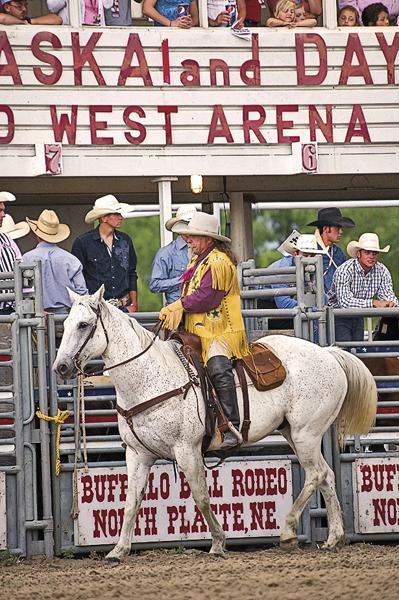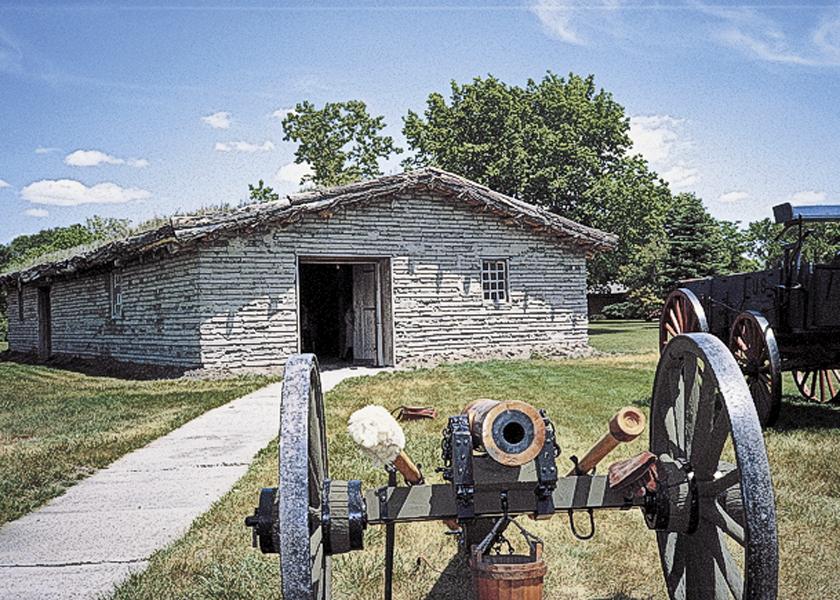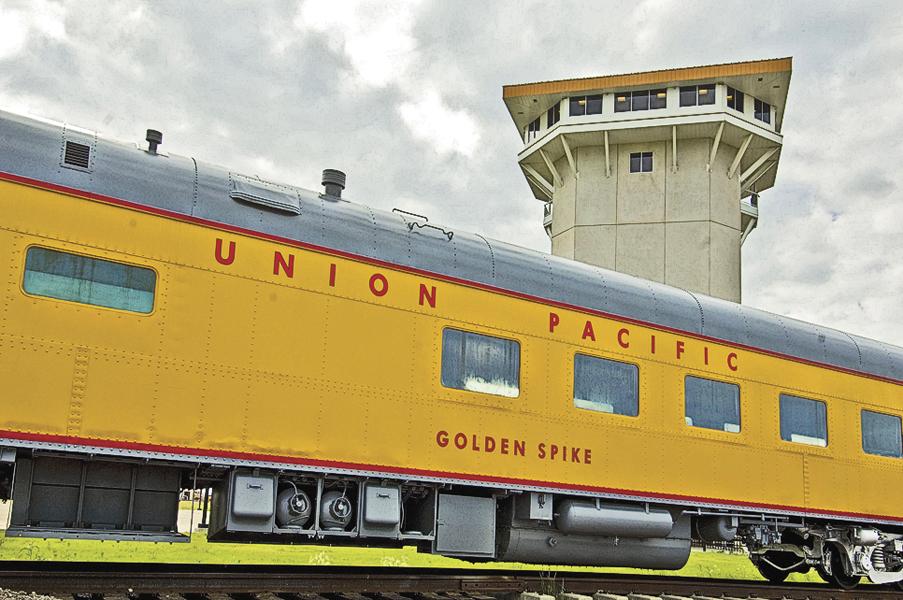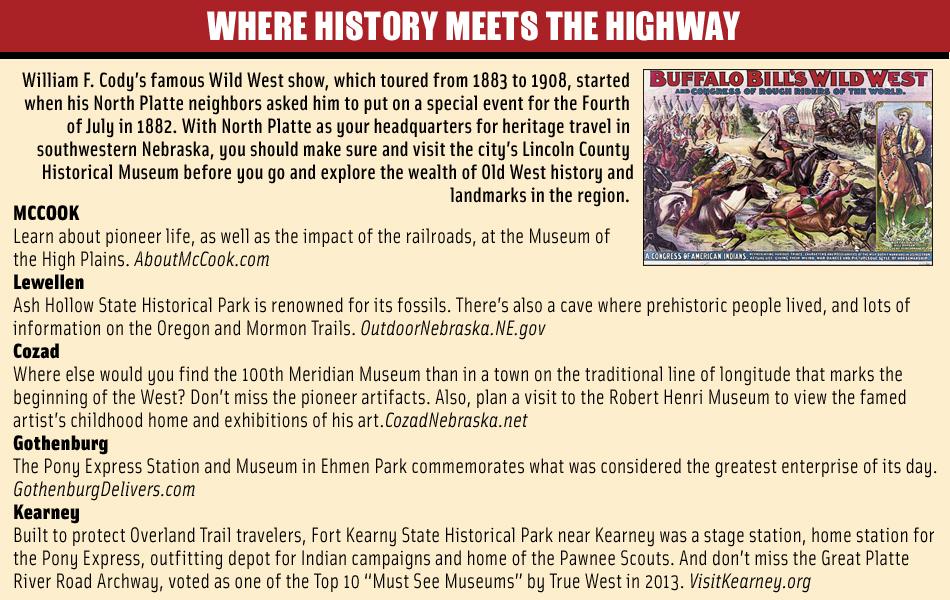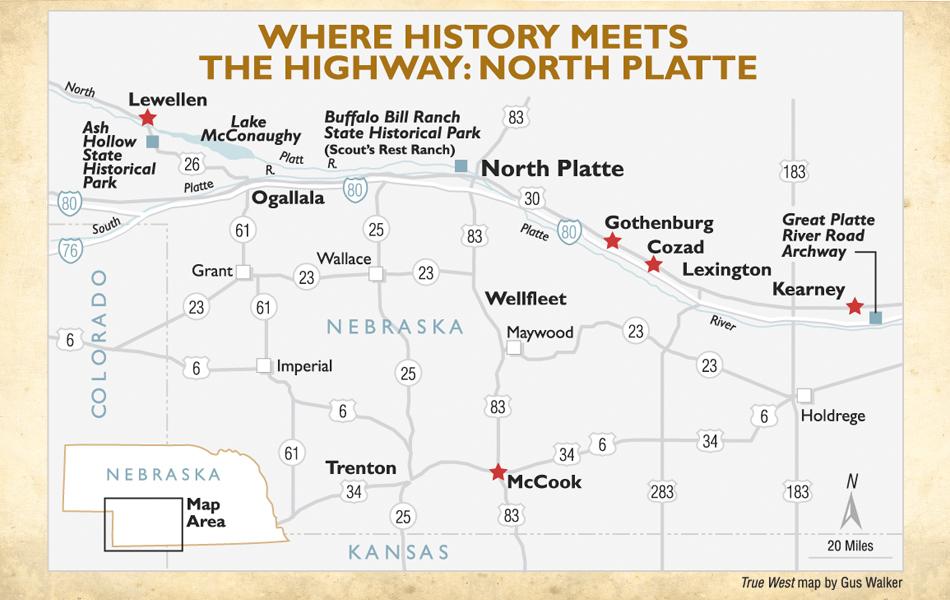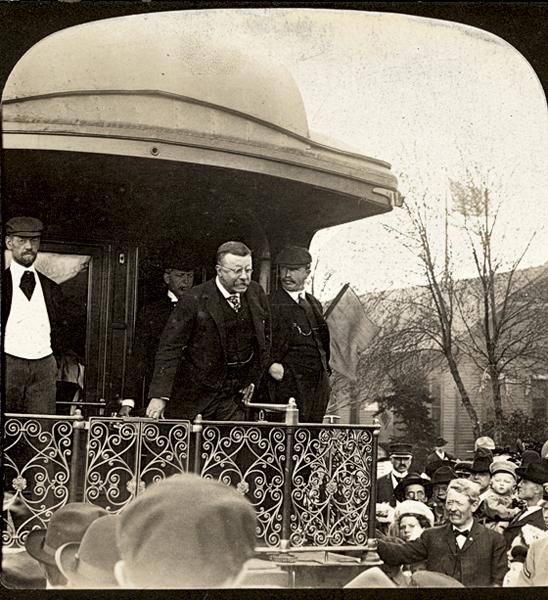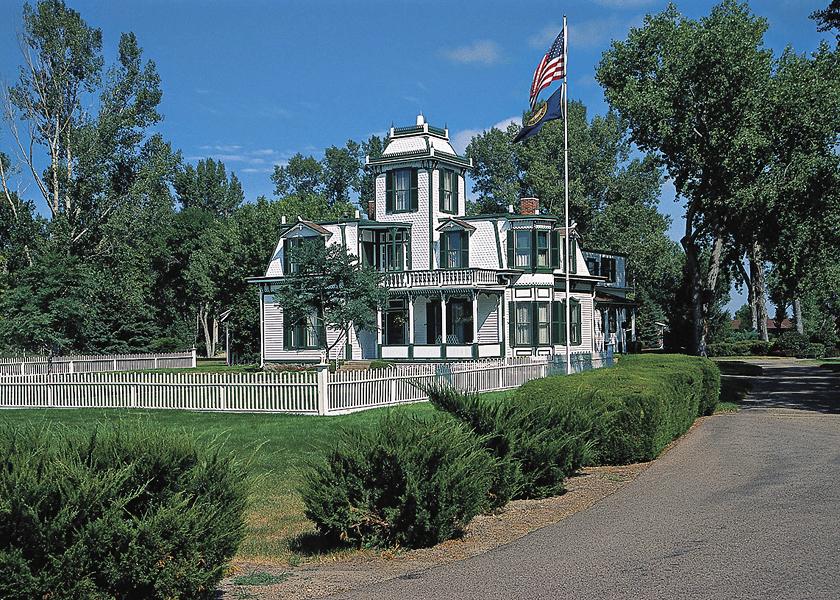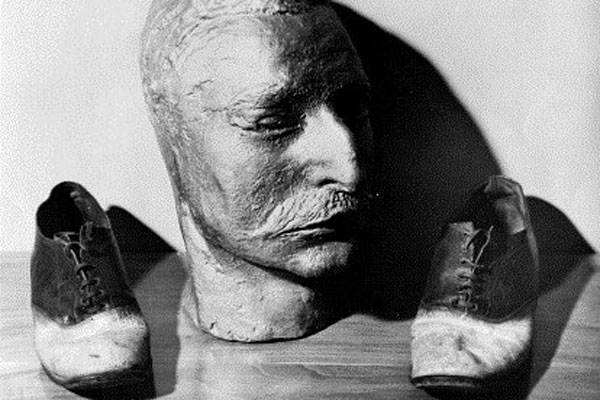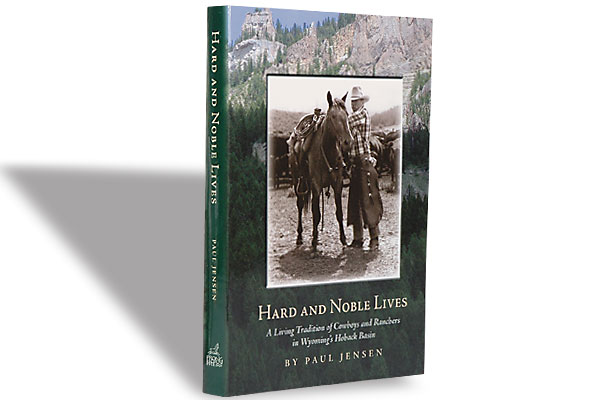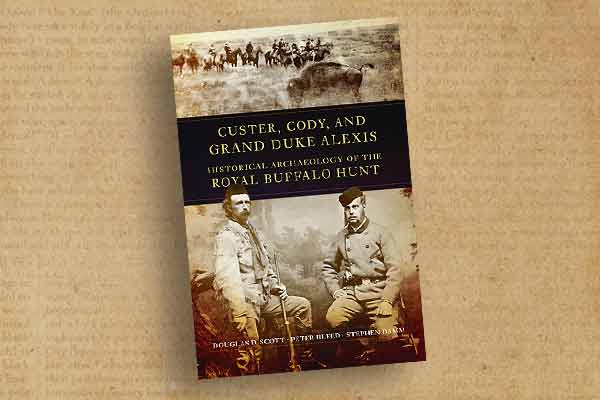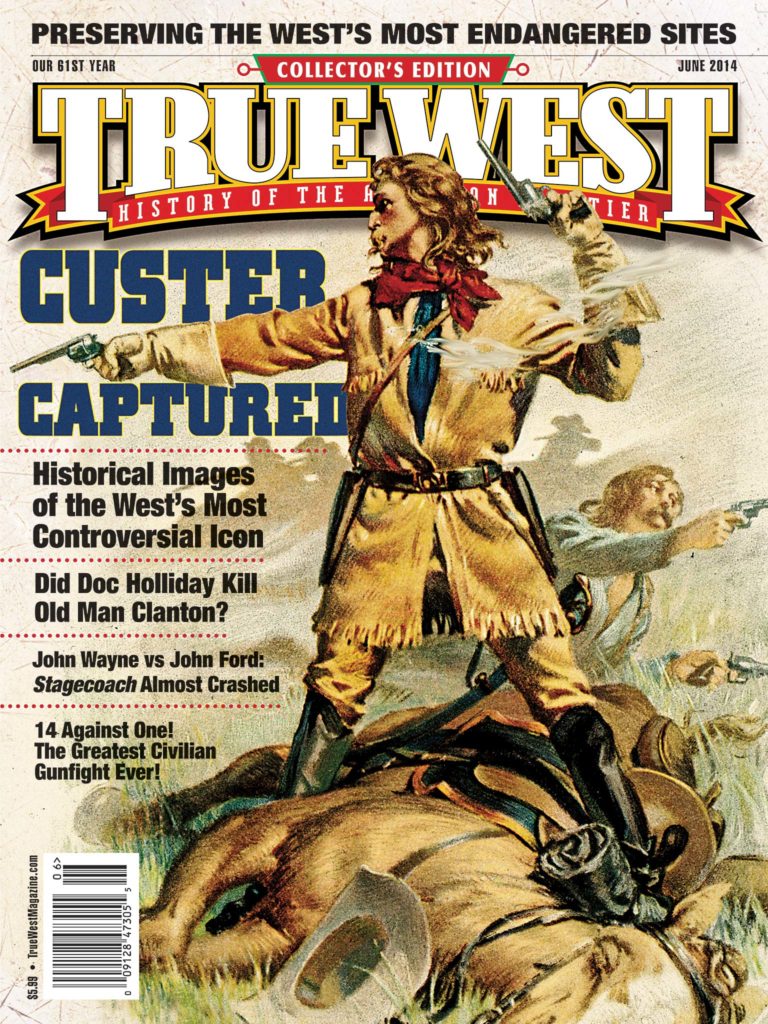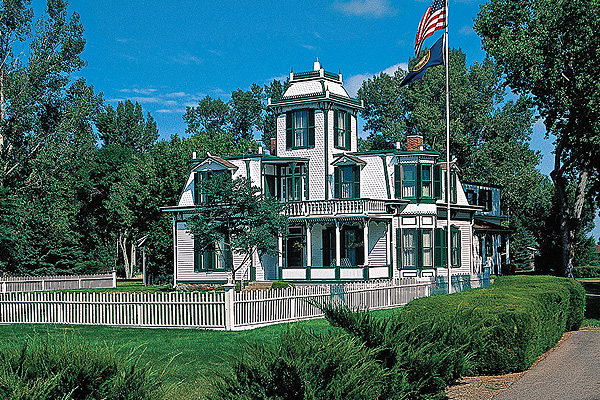 The railroads may have built North Platte, but it was the Old West’s most renowned showman who put the Nebraska town on the map.
The railroads may have built North Platte, but it was the Old West’s most renowned showman who put the Nebraska town on the map.
In 1882, town leaders asked one of their residents if he could put together something special for their upcoming Fourth of July celebration. So William F. Cody staged a little riding and roping show. The cowboy circus was so successful, he staged the “Wild West Combination” in Omaha the following year. Soon, Buffalo Bill was touring his Wild West show, a traveling troupe of expert riders, crack shots and Indian warriors that wowed audiences across the United States and Europe for decades.
Cody, wealthy and world famous, could have lived any place on earth. That he chose North Platte speaks volumes about the little town on the muddy river.
Nowadays his home—a sprawling, 18-room Victorian mansion—and his Scouts Rest Ranch are part of the Buffalo Bill Ranch State Historical Park, where you’ll find beaded buckskins and other mementos of Cody’s life as a Pony Express rider, buffalo hunter and Army scout.
“I think this town boils down to Buffalo Bill, the Old West trail system and the railroad,” says David Fudge, executive director of NEBRASKAland DAYS, Nebraska’s official 10-day celebration of the state’s heritage.
Of the three, Fudge thinks Cody had the biggest impact. “He came up with his ‘Old Glory Blowout’ here on July 4, 1882, and that spawned his Wild West show, which was taken all over the world,” Fudge says. This year’s celebration runs June 18 to 28, and features the Great American Wild West Show (essentially Cody’s show) on what was once Cody’s property.
The Platte River is, of course, what shaped North Platte’s history. The Oregon-California-Mormon Trail emigrants—as well as fur trappers and the Pony Express—all followed the river west.
But the town’s roots go back to November 9, 1866, when William Peniston and Andrew Miller opened a trading post near the confluence of the North and South Platte Rivers because they’d heard a construction camp for the Transcontinental Railroad would be coming soon. They’d heard right. While most towns that popped up along the railroad route were little more than temporary camps of saloons, casinos and brothels, each vying to relieve railroad workers of the cash in their pockets, North Platte became one of the first major repair center’s and roundhouse’s in the West, ensuring its future.
According to Dick Kreck’s Hell on Wheels: Wicked Towns Along the Union Pacific Railroad, the population of North Platte boomed to 5,000 in the six months after the railroad arrived. Apparently laying track was thirsty work—nine of the town’s 15 buildings were saloons. By June 1867, the Union Pacific had reached Julesburg, Colorado, and North Platte, Nebraska’s, population plummeted to around 300. The citizenry rebounded after railroad executives decided to make the town a division point.
Today, the Union Pacific’s Bailey Yard in North Platte is the largest rail center in the world. The open-air deck on the seventh floor of the Golden Spike Tower and Visitor Center is a fun way to see all the trains as well as the vistas across the plains. North Platte’s annual Rail Fest celebrates the town’s extraordinary railroad heritage, especially its ties to the Union Pacific Railroad. The Fest runs September 19 to 21 this year.
Photo Gallery
– Courtesy Nebraska Travel and Tourism –
– by E.M. Emanuel/Courtesy Nebraska Travel and Tourism –
– Courtesy Nebraska Travel and Tourism –
– Courtesy Library of Congress –


